Saarinen Tulip Side Chair
Designed by Eero Saarinen, 1957
Eero Saarinen vowed to address the "ugly, confusing, unrestful world" he observed underneath chairs and tables -- the so-called "slum of legs."
Share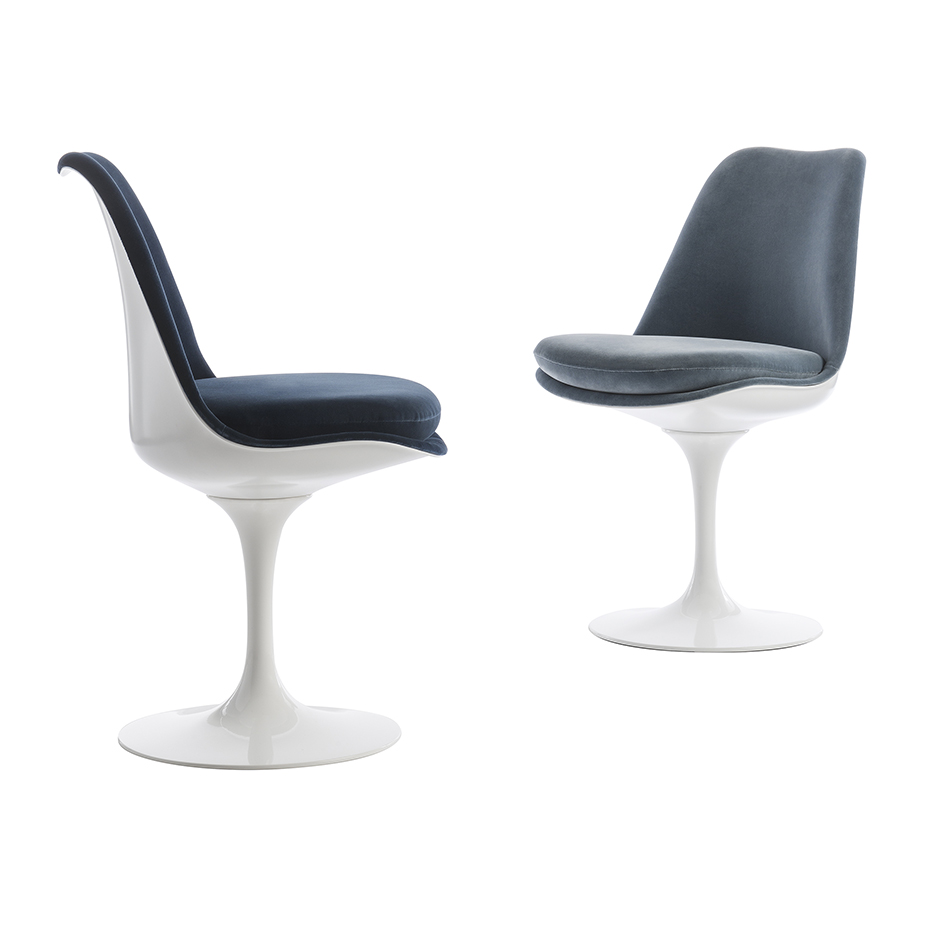
Eero Saarinen vowed to address the "ugly, confusing, unrestful world" he observed underneath chairs and tables -- the so-called "slum of legs."
Share

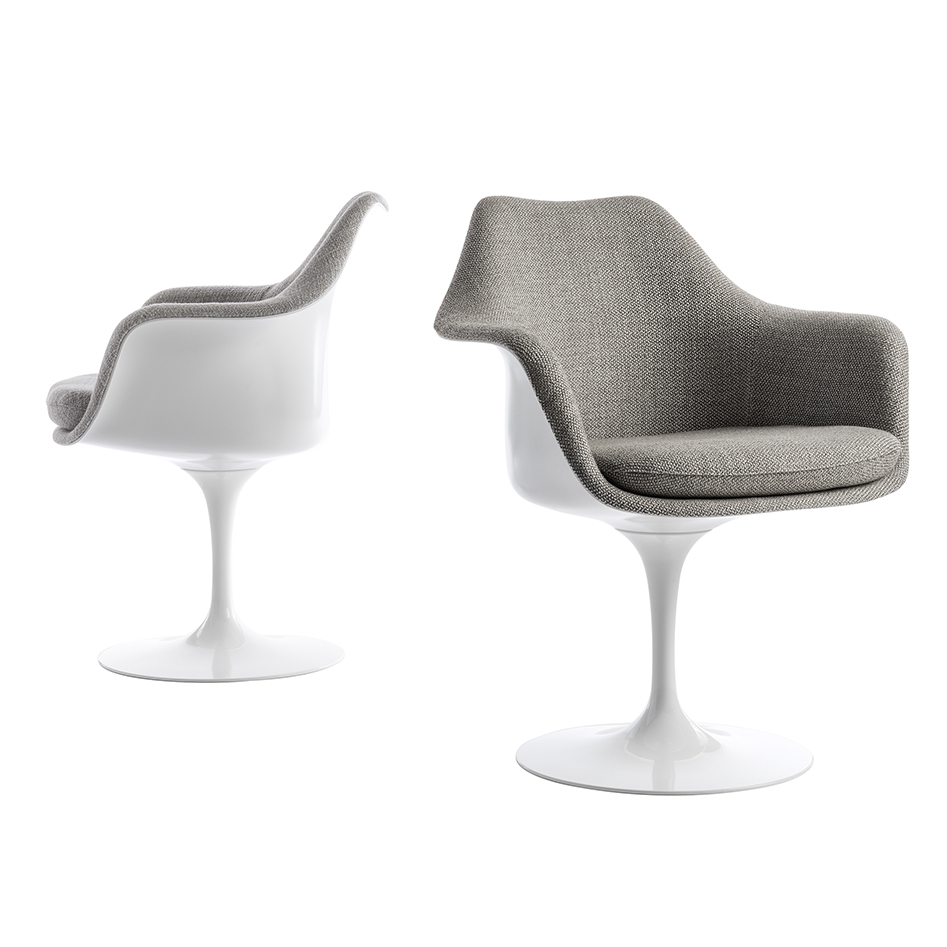
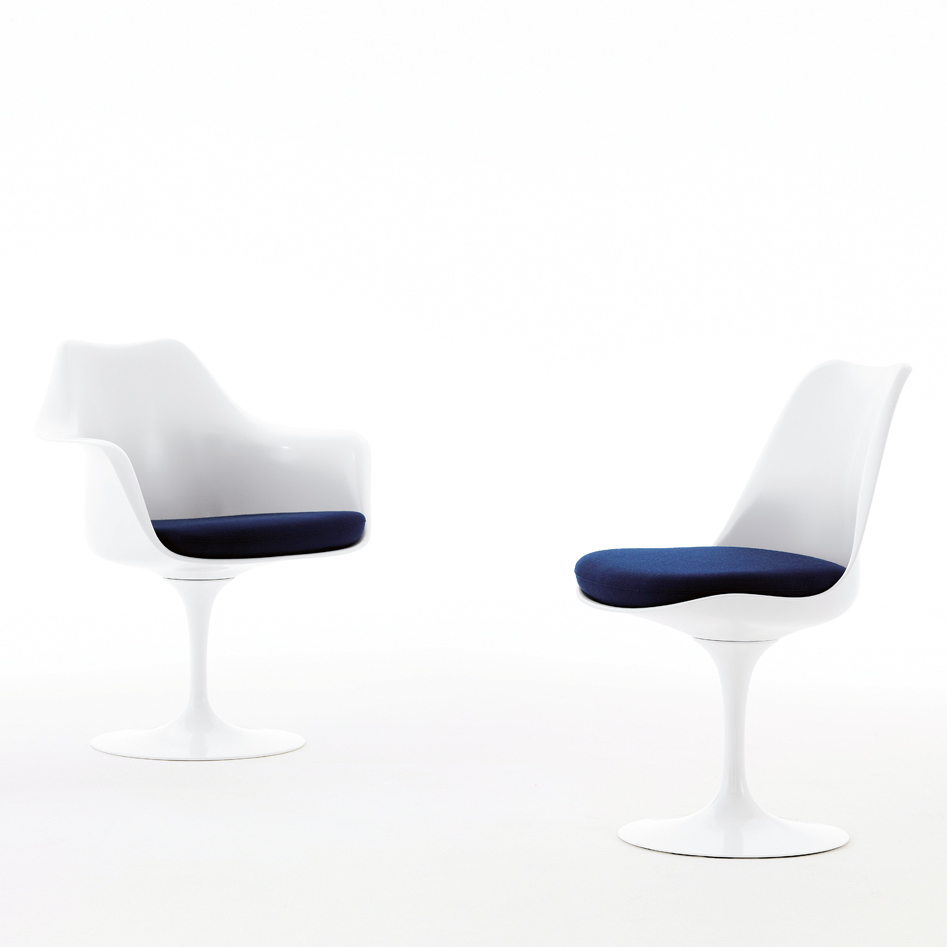
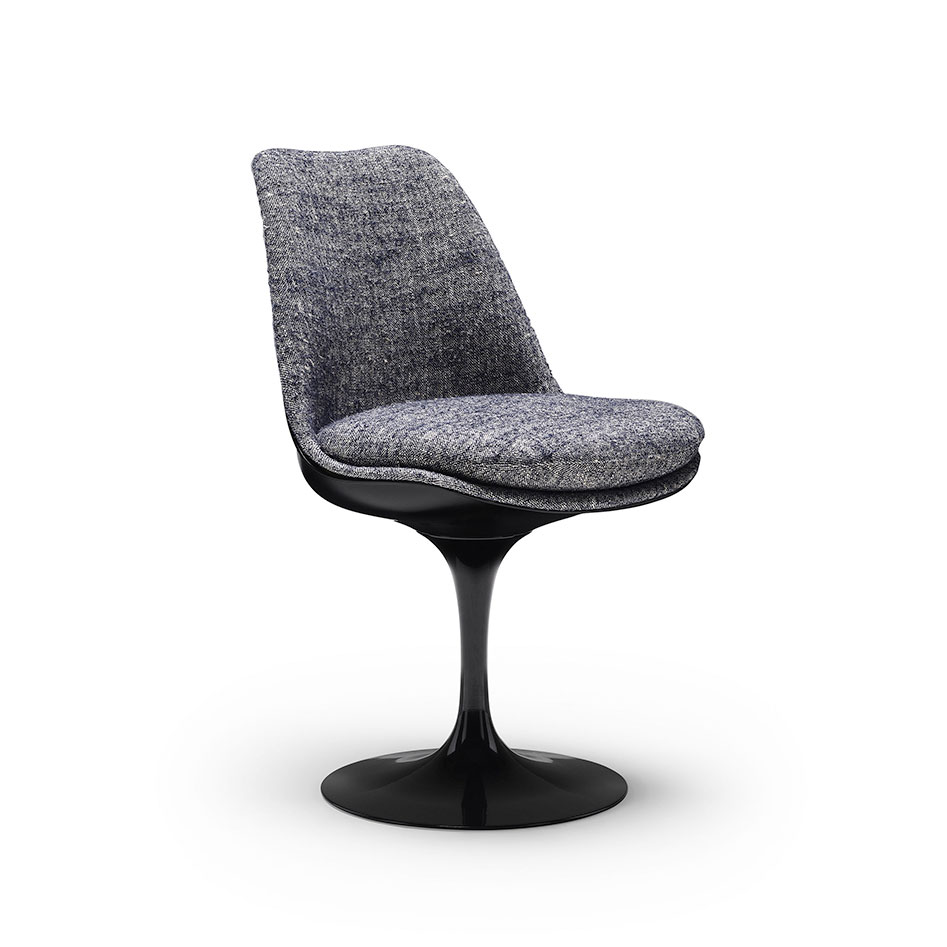
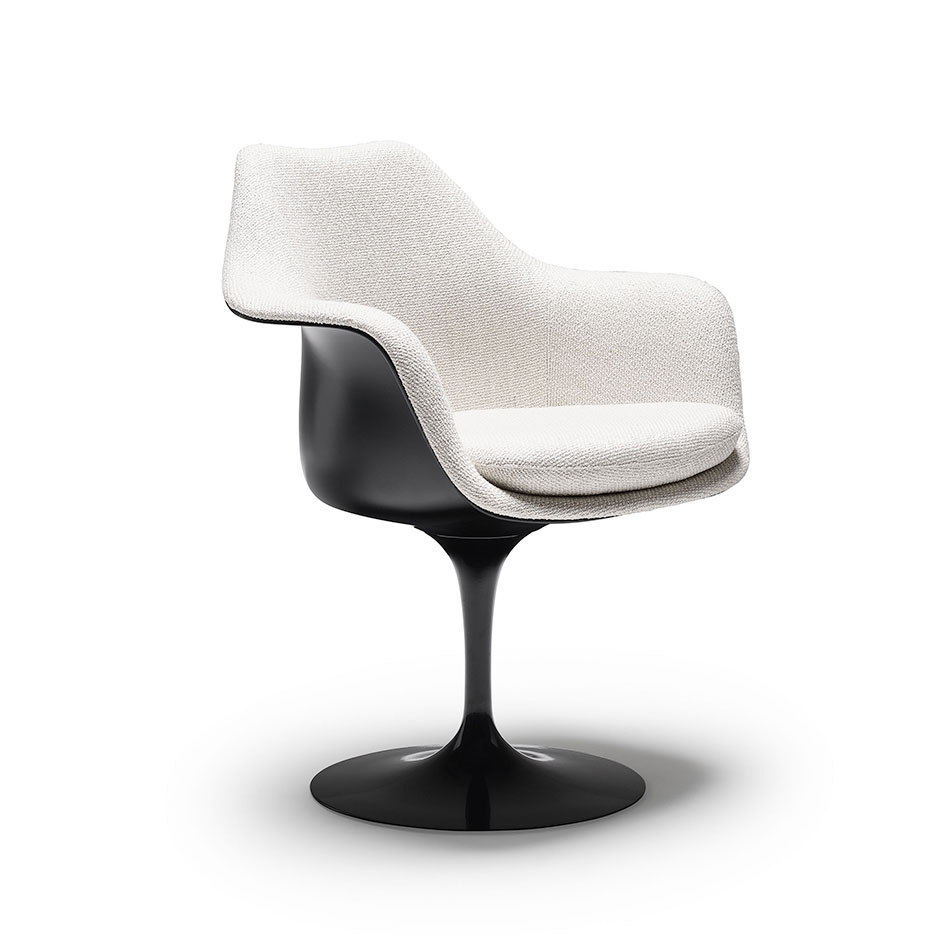
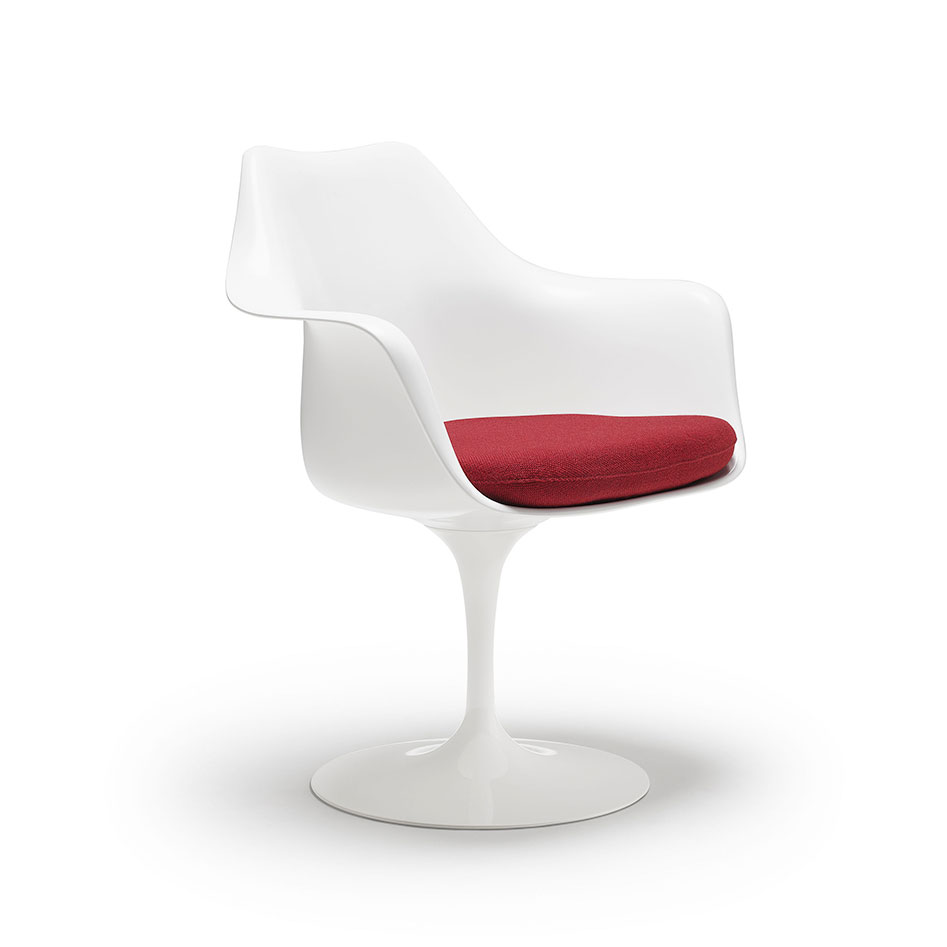
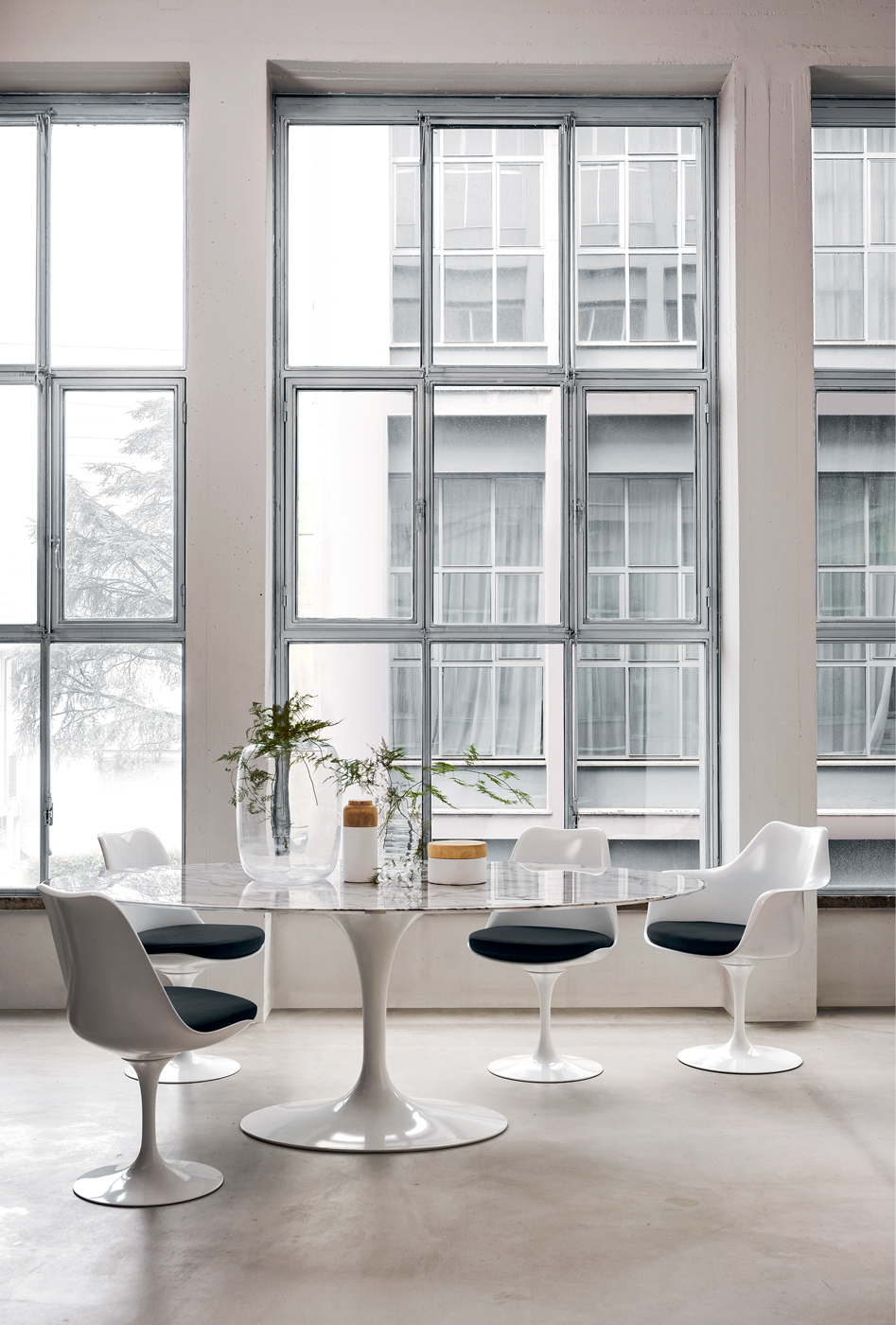
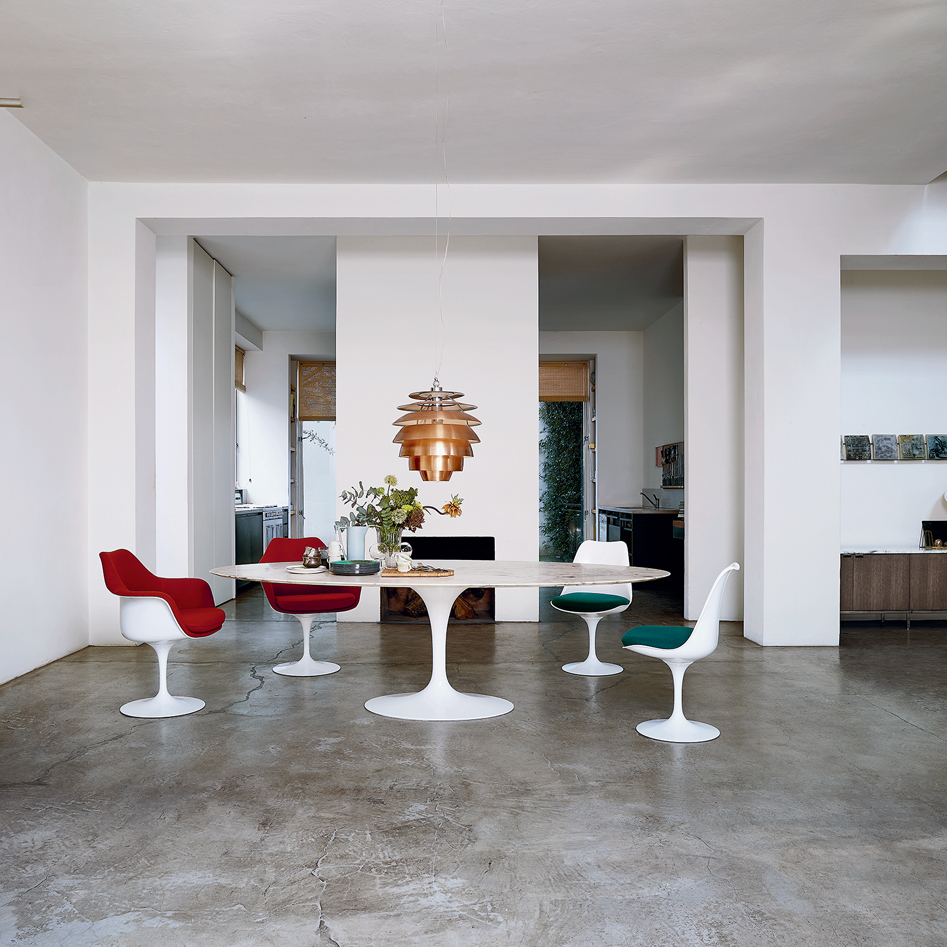
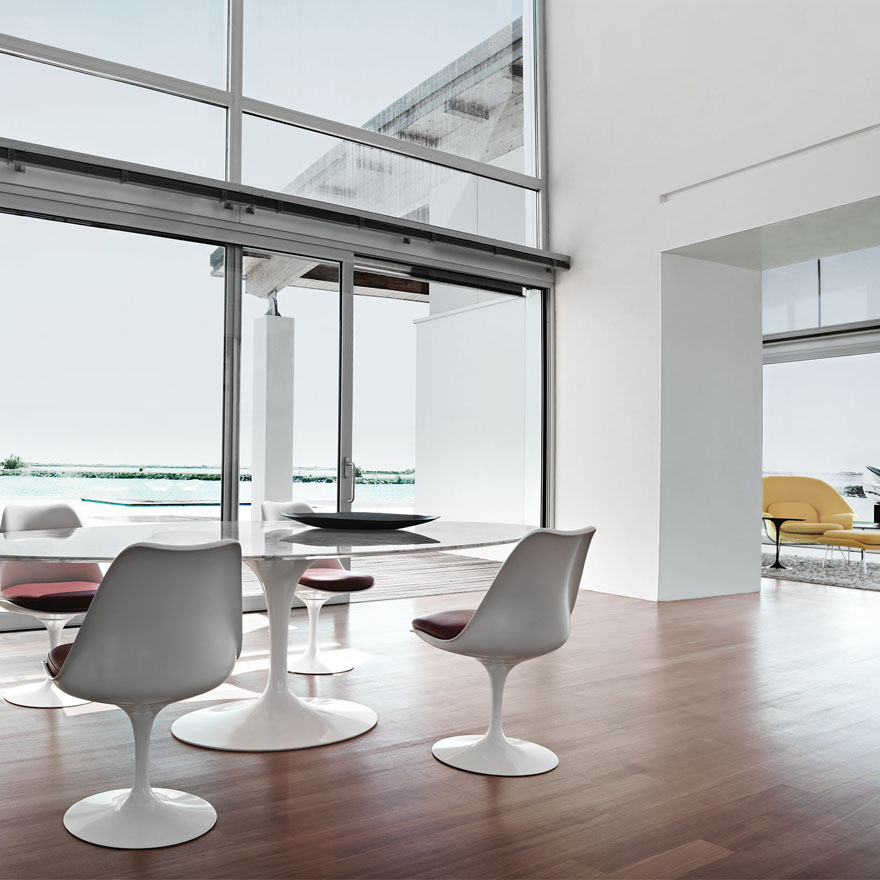
The Saarinen Tulip seating collection consists of an armchair and an armless chair, with swivel or fixed base.
The chairs are available with either an upholstered seat cushion, or fully upholstered inner shell with seat cushion. The swivel stool with an upholstered cushion completes the collection. The KnollStudio logo and the signature of Eero Saarinen are located on the underside of the base.
Base consists of cast aluminium with Rilsan coated finish for the white and black versions.
The shell is moulded fibreglass reinforced plastic bonded finish.
The shell and base are available in black or white colours.
Fully upholstered inner shell with seat cushion available in a wide range of fabrics.
Stool and chairs with seat cushion only are available in a wide range of fabrics and Spinneybeck leather. This product is available with foam that meets requirements for BS5852.
The Museum of Modern Art, New York, 1969.
Federal Award for Industrial Design, Germany, 1969.
Design Career Stuttgart Award, Germany, 1962.
Arm Chair
68cm W x 59cm D x 81cm H with seat height of 48cm.
Armless chair
49cm W x 53cm D x 81cm H with seat height of 49cm.
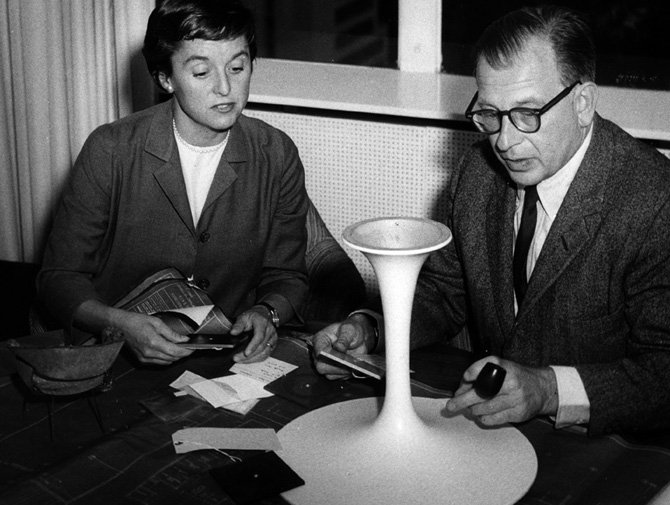
With the Pedestal Collection, Eero Saarinen vowed to eliminate the "slum of legs" found under chairs and tables with four legs. He worked first with hundreds of drawings, which were followed by ¼ scale models. Since the compelling idea was to design chairs that looked good in a room, the model furniture was set up in a scaled model room the size of a doll house.
Drawing on his early training as a sculptor, Saarinen refined his design through full scale models, endlessly modifying the shape with clay. “What interests me is when and where to use these structural plastic shapes. Probing even more deeply into different possibilities one finds many different shapes are equally logical—some ugly, some exciting, some earthbound, some soaring. The choices really become a sculptor’s choice.” Saarinen was assisted by Don Petitt, of Knoll’s Design Development Group, who introduced several ingenious methods of model making. Together with a Knoll design research team, they worked out the problems arising in production. Full scale models became furniture and, with family and friends acting as “guinea pigs,” the furniture was tested in the dining room and living room of the Saarinen house in Bloomfield Hills.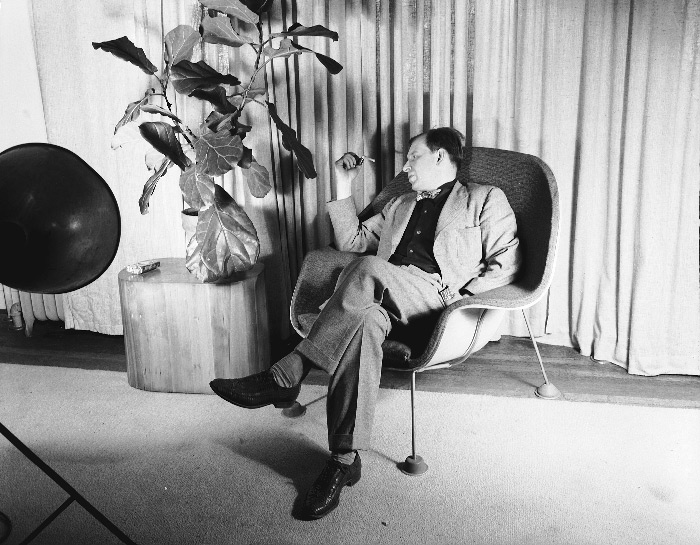
The son of architect and Cranbrook Academy of Art director Eliel Saarinen and his wife, textile artist Loja, Eero Saarinen studied sculpture in Paris and architecture at Yale before working on furniture design with Norman Bel Geddes and practising architecture with his father. He collaborated on several projects in furniture design with his friend, Cranbrook alumnus Charles Eames, and opened his own practice in Bloomfield Hills in 1950. Among the many buildings for which he is known are the Dulles International Airport in Washington, DC, The Gateway Arch in St. Louis, Missouri, and the TWA Terminal at Kennedy International Airport in New York. He was the recipient of numerous awards and the subject of many exhibitions.